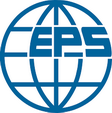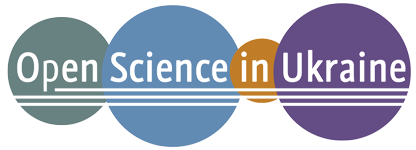Дослідження впливу осердя на ефективність індукційного нагрівання теплоносія низькотемпературної теплової трубки
DOI:
https://doi.org/10.15330/pcss.25.4.787-794Ключові слова:
теплова трубка, індукційне нагрівання, осердя, теплоносій, частота, потужністьАнотація
Досліджено вплив феромагнітних матеріалів трьох осердь циліндричної форми з конструкційної сталі та осердя спірального плетення з магнітної нержавіючої сталі на ефективність індукційного нагрівання теплоносія у низькотемпературній гнітовій тепловій трубці. Два осердя призначались для використання під шаром гніту, а два – за шаром гніту з нержавіючої сітки без магнітних властивостей. Досліджувалась ефективність індукційного нагрівання за допомогою циліндричної котушки, намотаної на поверхню трубки. Зібрано експериментальну установку з теплової трубки, надітої на її нижню частину циліндричної індукційної котушки, генератора імпульсів, підсилювача, силового ключа, ватметра, двох термопар та таймера. Експерименти показали, що на низькій частоті для теплових трубок з вертикальною орієнтацією зі зменшенням товщини стінки залізного циліндричного осердя та збільшенні його радіусу ефективність індукційного нагріву зростає. Для теплових трубок з довільною орієнтацією у просторі найвищу ефективність індукційного нагрівання забезпечує циліндричне тонкостінне одношарове осердя, розміщене після шару гніту. Але найвищу надійність експлуатації та високу ефективність індукційного нагрівання здатні забезпечити суцільне циліндричне осердя, або осердя спірального плетення з магнітної нержавіючої сталі AISI 430, чи 439, намотане на термостійкий пластмасовий каркас з отворами для руху теплоносія. Максимальний радіус та мінімальна маса осердя повинні забезпечити найвищу інтенсивність нагрівання теплоносія за одиницю часу.
Посилання
P.M.E. Vijayakumar, S. Sajairaj, R. Santhoshkumar, Review on conventional, modern heat pipes and its applications, International Research Journal of Engineering and Technology, 3(10), 513 (2016); https://www.irjet.net/archives/V3/i10/IRJET-V3I1099.pdf.
B. Abdullahi, K. Al-dadah Raya, S. Mahmoud, Thermosyphon Heat Pipe Technology, IntechOpen, 1, (2019); http://dx.doi.org/10.5772/intechopen.85410.
S. H. Noie, M. R Sarmasti Emami, M. Khoshnoodi, Effect of inclination angle and filling ratio on thermal performance of a two-phase closed thermosyphon under normal operating conditions, Heat Transfer Engineering, 28(4), (2007); https://doi.org/10.1080/01457630601122997.
V. Prokopiv, I. Horichok, T. Mazur, O. Matkivsky, L. Turovska, Thermoelectric materials based on samples of microdispersed PbTe and CdTe. Proceedings of the 2018 IEEE 8th International Conference on Nanomaterials: Applications & Properties (NAP - 2018), Zatoka, Odesa Region, (2018); https://doi.org/10.1109/NAP.2018.8915357.
Mrs. J. Emeema. Heat Pipes – A Review on Performance Parameters, International Journal of Creative Research Thoughts, 6(2), 746 (2018); https://ijcrt.org/papers/IJCRT1892456.pdf.
V. Agarwal, S. Jain, K. Vya, G. Jain, A Review Paper on Role of Heat Pipes in Cooling, International Journal of Emerging Trends in Electrical and Electronics, 11(2), 154, (2015); https://www.academia.edu/29562085/A_Review_Paper_on_Role_of_Heat_Pipes_in_Cooling_CTAE_1_2_GITS_3_4?uc-g-sw=85697005.
I.R. Vashchyshak, S.P. Vashchyshak, V.D. Myndyuk, Energy-efficient heating system for the premises of technological gas transportation facilities using steam-droplet heaters, Oil and Gas Energy 2017: Int. science and technology conf., Ivano-Frankivsk, May 15-19, 2017: collection of abstracts adds. – Ivano-Frankivsk, 285 (2017); http://elar.nung.edu.ua/handle/123456789/5842.
T. Mazur, V. Prokopiv, L. Turovska, Quasi-chemistry of intrinsic point defects in cadmium telluride thin films, Molecular Crystals and Liquid Crystals. 671(1), 85(2018); https://doi.org/10.1080/15421406.2018.1542088.
Abdullahi, A. El-Sayed, R. Khalid Al-Dadah, S. Mahmoud, A. Fateh Mahrous, N. Mu’az Muhammad, S. Bello Abbakar, Experimental and Numerical Investigation of Thermosyphon Heat Pipe Performance at Various Inclination Angles, Journal of Advanced Research in Fluid Mechanics and Thermal Sciences, 44(1), 85 (2018); https://www.researchgate.net/publication/324983581_Experimental_and_Numerical_Investigation_of_Thermosyphon_Heat_Pipe_Performance_at_Various_Inclination_Angles#fullTextFileContent.
X. Lu, Y. Li, Z. Sun, Research Progress and Prospect of Heat Pipe Capillary Wicks, Journal of Thermal Science and Engineering Progress, 28, 100 (2022); http://dx.doi.org/10.5098/hmt.18.24.
K. Keishi, М. Akio, Experimental Study on Thermal Performance of a Loop Heat Pipe with Different Working Wick Materials, Energies, 14(9), 2453 (2021); http://dx.doi.org/10.3390/en14092453.
V. Kopei, O. Onysko, C. Barz, P. Dašić, V. Panchuk, Designing a multi-agent plm system for threaded connections using the principle of isomorphism of regularities of complex systems, Machines, 11(2), 263 (2023); https://doi.org/10.3390/machines11020263.
S. H. Uddin, Md. Islam, F. Jarrar, I. Janajreh, Experimental Study on the Effect of Water as a Working Fluid in Aluminium Heat Pipes, Journal of Thermal & Environmental Engineering, 20 (1), (2023); https://iasks.org/articles/ijtee-v20-i1-pp-01-05.pdf.
R. Cai, P. Bai, H. Wang, Y. Luo, X. Cen, G. Wu, S. Li, G. Zhou, Experimental investigation of the heat transfer performance of a novel double independent chambers casing heat pipe applied for heat dissipation at low temperatures, Applied Thermal Engineering, 188, 116508(2021); https://doi.org/10.1016/j.applthermaleng.2020.116508.
J. Vaibhav, J. Harsh, M. Lakshay, Thermodynamic Performance Evaluation of Heat Pipe, International Journal of Advance Research and Innovation, 6(1), 55 (2018); https://doi.org/10.51976/ijari.611810.
D.S. Naruka, R. Dwivedi, P.K. Singh, Experimental inquisition of heat pipe: performance evaluation for different fluids, Experimental Heat Transfer A Journal of Thermal Energy Generation, Transport, Storage and Conversion, 1 (2020); https://doi.org/10.1080/08916152.2020.1713254.
R.D. Bhagat , S.R. Thakare , S.C. Makwana, Experimentation to predict the thermal performance of conventional heat pipe with water and hydrocarbon as working fluid, International Journal of Research in Engineering and Technology, 5(3), 1 (2016); https://ijret.org/volumes/2016v05/i03/IJRET20160503073.pdf.
B. Dzundza, O. Kostyuk, & T. Mazur, Software and Hardware Complex for Study of Photoelectric Properties of Semiconductor Structures. 2019 IEEE 39th International Conference on Electronics and Nanotechnology (ELNANO), Kyiv, 16-18 April, (2019); https://doi.org/10.1109/ELNANO.2019.8783544.
G.V.R. Seshagiri Rao, U. Ramakanth & Suryaprakash, Experimental investigation of heat transfer characteristics of the heat pipe, International Journal of Mechanical and Production Engineering Research and Development, 7(5), 209 (2017); https://www.academia.edu/35534469/EXPERIMENTAL_INVESTIGATION_OF_HEAT_TRANSFER_CHARACTERISTICS_OF_THE_HEAT_PIPE .
I. R. Vashchyshak, O.P. Vashchyshak, A.V. Yavorsky, Ways to improve energy efficiency of buildings of oil and gas complex facilities, Scientific Bulletin of the Ivano-Frankivsk National Technical University of Oil and Gas, 1(36), 176 (2014); http://elar.nung.edu.ua/handle/123456789/2560.
I.R. Vashchyshak, S.P. Vashchyshak, O.V. Popovych, E.R. Dotsenko, Improvement of steam-droplet heaters for heating systems of premises and buildings, Methods and devices for quality control, 39(2), 68 (2017); http://elar.nung.edu.ua/handle/123456789/6534.
S.P. Vashchyshak, T. Lammert, Electronic control of the temperature regime of the steam droplet heater of the heating system, Applied scientific and technical research: III International. science and practice conference, Ivano-Frankivsk: Academy of Technical Sciences of Ukraine (April 3-5, 2019), p. 110, Ivano-Frankivsk: Symphony forte (2019); https://ukrtsa.org.ua/wp-content/uploads/2022/02/ConferenceUTSA2019.pdf .
Z. Liu, D. Yuan, Y. Hao, X. Li, L. Yang, J. Yao, Experimental study on heat transfer performance of high temperature heat pipe under axial non-uniform heat flux, Applied Thermal Engineering, 236, 121817 (2024); https://doi.org/10.1016/j.applthermaleng.2023.121817.
H. Nykyforchyn, V. Kyryliv, O. Maksymiv, V. Kochubei, R. Boyko, V. Dovhunyk, Wear resistance of the surface nanocrystalline structure under an action of diethyleneglycol medium, Applied Nanoscience, 9(5), 1085 (2019); https://doi.org/10.1007/s13204-018-0690-3.
T. Mazur, M. Mazur, M. Halushchak, Surface-Barrier CdTe Diodes for Photovoltaics, Journal of Nano- and Electronic Physics, 15(2), 02004-1 (2023); https://doi.org/10.21272/jnep.15(2).02006.
A. Kelesoglu, N. Kanmaz, H.M. Unver, & U. Unver, A review on the evolution of induction fluid heaters. Energy Sources, Part A: Recovery, Utilization, and Environmental Effects, 44(3), 7949 (2022); https://doi.org/10.1080/15567036.2022.2118906.
##submission.downloads##
Опубліковано
Як цитувати
Номер
Розділ
Ліцензія
Авторське право (c) 2024 Iryna Vashchyshak, Serhii Vashchyshak, Tetiana Mazur, Myroslav Mazur

Ця робота ліцензованаІз Зазначенням Авторства 3.0 Міжнародна.










